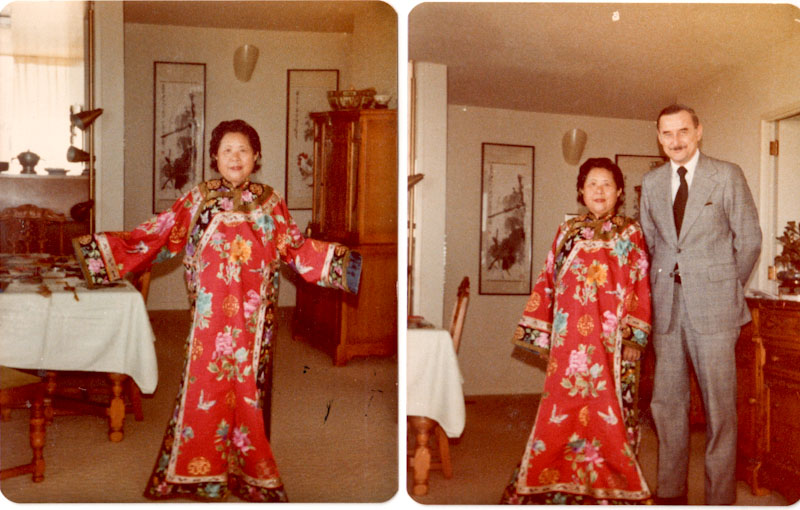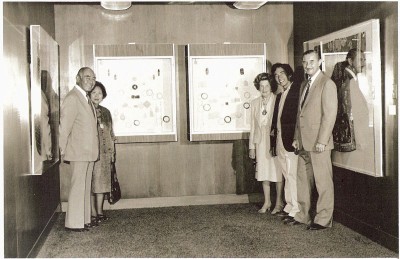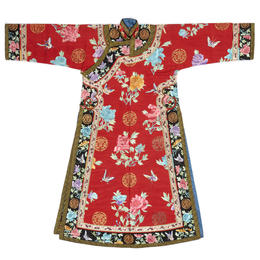 Local relatives are angry after couples’ collection is sold off, mostly to buyers outside the Northwest.
Local relatives are angry after couples’ collection is sold off, mostly to buyers outside the Northwest.
The Tacoma Art Museum (TAM) has come under recent scrutiny for auctioning off a significant collection of Chinese jades and textiles donated by the late Colonel John C. Young and Mary Lee Young from San Francisco.
The process of deaccessioning–the term for selling unused pieces from a collection–is a standard disposal practice of museums.
But two of the descendants of the Young family, Connie Young Yu of California, and Al Young of Shoreline, are engaged in a bitter dispute with TAM’s leadership, concerning the events that have led to the recent disposal of the collection their parents assembled over the course of nearly 50 years.
“My mother collected Chinese art when it was not valued in the Western world as it is now,” said Al Young, who himself broke ground in the seventies as one of the first Chinese-American race car drivers, and who taught in Seattle Public Schools for almost 40 years.
“After my father retired, [my parents] traveled the world seeking out Chinese antiquities,” he said. “Many of China’s treasures had been plundered by Westerners during past centuries, so [my mother] found many pieces of embroidery and jade in places like Florence, Italy, and other European cities. She wanted others in the USA to understand how rich and beautiful Chinese art was, and took every opportunity to exhibit her collections. They perceived that museums were the best stewards for their collections.”

The Young family donated their Chinese antiquities to Stanford University and TAM in the mid-1970s, splitting their collections of historical textiles and jade objects over the two institutions.
“Our vision is to be a national model for regional museums,” TAM director Stephanie Stebich said of the deaccessioning . “We did the collection assessment in a thoughtful way. We have been perfectly transparent–ever since we had board approval last spring, we’ve done everything with due deliberation and without haste. We wanted to do the right thing and be gracious and transparent. We took our time and met with the family. Frankly, they’ve praised us for spending time with them and wished the auction would go well.”
In early the spring of 2012, Stebich met separately with both Connie and Al Young to brief the family on the museum’s intention to dispose of their parents’ collections, following assessment by third-party experts.
In her meeting with the Youngs, Stebich claimed that she informed them that their parents’ collections, along with works from the Haley and Priem collections, would only bring in “70,000 to $100,000,” according to an estimate from Bonhams, a worldwide auctioneering firm.
Al Young contends that the figures he was given were lower, in the range of “$30,000 to $70,000.” Regardless of the exact figure quoted, the first round of items objects sold at Bonhams’ December auction netted the museum almost more than a quarter of a million dollars.

Both Al and Connie Young have strong ties to museum and nonprofit boards; Al is a trustee of the Museum of History and Industry, while Connie serves on the board of the Hakone Foundation, a nonprofit established to steward and protect the oldest Asian estate and gardens in the Western Hemisphere.
With a deep knowledge of stewardship, the Youngs discussed options with Stebich that included transfer of their parents’ collections to alternative repositories, including the Wing Luke Museum of the Asian Pacific American Experience or Stanford University.
Cassie Chinn, the Wing Luke’s deputy executive director, recalls having a brief conversation with Stebich: “We get a number of calls from people who have material or items in their collections related to Asia, asking if we are interested.”
But Chinn never received any written follow-up information, or an inventory, regarding the nature of the collection and its exhibition history or significance to its collectors.
“We wish we had more details,” Chinn said. “Museums generally have a high responsibility to ensure public trust to steward donations given to them and any deaccessioning process needs to go through a thorough, rigorous process; the Wing Luke would have had to go through our own process to consider the story, its fit with our collection, as well as recommend other institutions that might be a better fit.”

Stebich said she eventually decided against contacting the Wing Luke concerning a transfer.
“When considering area museums, we know the Seattle Asian Art Museum and the Burke have strong holdings in these areas. It didn’t make sense to give to them, because they already have similar collections. The Wing is another institution in the area that could easily borrow from sister institutions.”
In June April, TAM’s board approved a plan to sell the Young family’s collections to generate funds for the purchase of works by Northwest artists of Chinese descent.
“We thought it might be a lovely thing to purchase works that tell the story of the Chinese in the Northwest, given the interests of the donors,” said Stebich. “One artist we are considering, among others, is Seattle-based Zhi Lin, who has done an interesting series on the golden spike and Chinese railroad workers. He works in video, photography and works on paper.”
Back in 1979 objects from the Young collections were celebrated in the special exhibition, “Imperial Robes from China and Chinese Jade.” Two cases of jade later went on permanent display at TAM, and items from the Young collections were exhibited again in 1996.
But with the shift in institutional priorities and a formal revisioning of TAM’s collections scope, the Young collections no longer fit into the museum’s long-term strategic plans. Shortly after the board approved deaccession plans, TAM posted a statement to its website, characterizing the items to be deaccessioned as “not as museum quality” and “mostly tourists’ keepsakes and mementos.”
Stebich claimed that these comments pertained to other items included in the deaccession.
“We deaccessioned 220 objects from the collections,” she said. “Some of those are Japanese objects, and that statement refers specifically to those items.”
In response to TAM’s statement, Al Young said: “We feel that the recent handling of our family’s remaining collecting has been incompetent and/or deceptive, and that it is insulting to our family and to the Chinese American community.”
Invoking a recent time in history when Chinese Americans were expelled from Tacoma during the era of the Chinese Exclusion Act, Al Young says he sees a clear connection between the disposal of his parents’ legacy and the expulsion and erasure of the Chinese presence from the community.

“These priceless Chinese artworks are gone from the Northwest forever,” he commented in reflecting upon the Qing Dynasty robes sold off to private buyers. “The city of Tacoma will never see the likes of this kind of collection.”
Items sold in the December auction included a pair of reticulated jade pendants from the 19th century that sold at $43,750, or 20 times their pre-sale estimate; an apple-green jade two-section belt buckle at $40,000, or five times its presale estimate; a late Qing dynasty Manchu noblewoman’s robe at $16,250; and a yellow woven silk noblewoman’s long vest at $27,500.
Mary Young’s favorite textile, an embroidered Manchu noblewoman’s red silk robe from the late Qing Dynasty era, was sold at $15,000 to a buyer from China who outbid Connie Young Yu, Mary Young’s daughter.
Approximately 80 pieces from the Youngs’ original donation to TAM are scheduled to be sold at Bonhams’ March 12 auction in San Francisco. But at a press conference Thursday Al announced that he plans to take legal action against TAM, and he has filed a claim to stop the remaining items from being auctioned.
A community forum on the issue is scheduled for Monday at 6pm at the Asian Pacific Cultural Center in Tacoma, but TAM leadership have not yet verified whether they’ll attend.
This post has been updated since its original publication.
A version of this story was originally published in the International Examiner.



It’s a shame such an extensive collection that took a family’s lifelong dedicated effort to collect and care got split and dispersed by such sale. There may be many museums that are starving for fine traditional Asian art objects, and the new generations of Asian Americans as well as general public would need and be interested in such heritage. Why not transfer so the museums all benefit without splitting collections and hurting donor’s trust? If money is concerned, why not put some fees on the transfer? Also, where are the multimillionaires and billionaires out there who do not know where to spend their money? What could be a better cause than spending on caretaking the art heritage of civilizations?